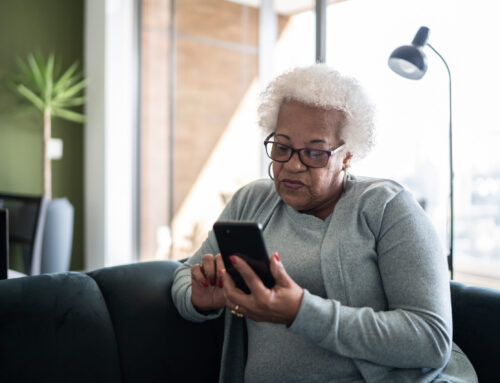Having an effective method of communication between social landlords and their tenants is more important than ever. There is pressure on social housing providers to increase their property numbers as budgets shrink while the expectations from tenants to receive a high-quality, personalised experience have gone up. Outdated methods of communication, such as letters and even picking up the telephone, are just not providing the support needed.
So, what’s the solution? This blog explores how the Smartphone may provide the vital tool needed for solving the social landlord and tenant disconnect.
Why is effective communication between the social landlord and their tenants so important?
Communication between a landlord and a tenant is essential for helping the landlord protect their assets. If a tenant cannot easily reach their landlord, repairs can go unreported, local issues may deteriorate and rent payments may be missed. This lack of communication can lead to expensive repair bills for the landlord or potential litigation risks.
Trying to reach a tenant, chasing them up with phone calls and letters takes time, money and effort, all at the expense of the social landlord. These costs could mount up further if an onsite property visit is required. Landlords still need to pay the fees of any contractors attending, even if the tenant is not present and the property cannot be accessed. Moreover, if the situation continues, the landlord could risk not meeting certain required obligations, violating housing regulations
or suffering financial penalty.
Why are traditional communication methods not working?
The social housing sector has been slow to change over the last few years, with the go-to methods of communication remaining much the same: letters, phone calls and web based tenant portals.
Letters and phone calls are no longer cost-effective methods of communication. We estimate the cost of one phone call to be as much as £7.00 when using a call centre, while posting a letter costs around £1.50, all-inclusive, and can be slow. Furthermore, both letters and phone calls do not always reach the right person. With landlines rarely used and mobile numbers often changing, speaking to the correct tenant can be challenging.
What does the Smartphone offer to solve the disconnect
The technology behind a Smartphone means that it can offer the landlord more than the ability to call or send texts. The real benefit comes from providing tenants with a landlord branded native mobile app.
A native app provides a tenant with a fast, intuitive and purpose-built method of engaging with their landlord. Apps are what most people are used to these days. And just as we use them for ordering food or booking taxis, native apps can be used to report issues, schedule repairs and process payments. They can offer a two-way messaging service and a method of targeted communication for both parties.
Furthermore, features such as push notifications, geotagging, biometrics and offline functionality offer more ways to engage tenants.
The mobile app offers ease, convenience, speed and personalisation for both tenants and landlords. It’s a smarter method of communication, proven by many other industry sectors to drive engagement, and one that can help solve the disconnect many social landlords experience.
Follow the link to learn more about Optus Homes’ native app, and if you have any queries, please get in touch with our team.



